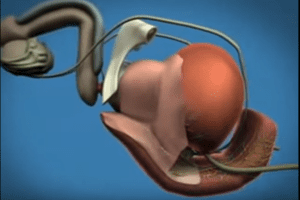
Probe For Robotic Prostate Surgery On. According to a new study, hospitals with a higher volume of robot-assisted prostate surgery have lower complication rates for the procedures. Hospitals that performed the fewest robot-assisted radical prostatectomy (RARP) procedures had a 14.7% complication rate, while complications occurred in 5.7% of cases at the highest-volume hospitals, MedPage Today reports. […]

Probe For Robotic Prostate Surgery On. According to a new study, hospitals with a higher volume of robot-assisted prostate surgery have lower complication rates for the procedures.
Hospitals that performed the fewest robot-assisted radical prostatectomy (RARP) procedures had a 14.7% complication rate, while complications occurred in 5.7% of cases at the highest-volume hospitals, MedPage Today reports.
The findings suggest that market and reimbursement forces created a “perverse disincentive” that discouraged low-volume hospitals from referring patients to high-volume centers, Jesse Sammon, DO, of the Henry Ford Health System in Detroit, reported at the meeting of the American Urological Association.
“As more institutions acquire a robot, in the U.S., the fee-for-service model tends to disincentivize referral to high-volume institutions,” Sammon said. Once a facility has invested in a surgical robot, the institution has an incentive to promote its use, even for as few as 25 to 30 cases a year. Sammon feels this situation jeopardizes patient care, according to MedPage Today.
Dr. Christopher Kane, of the University of California San Diego, who co-chaired the session, said Sammon and colleagues previously reported data showing that the safety of open radical prostatectomy has declined in recent years, coinciding with a sharp decline in the overall volume of all open surgical procedures. “Could it be that high-volume surgeons are migrating to RARP, so that the only people doing open radical prostatectomy are the low-volume surgeons operating at relatively low-volume hospitals?” Kane asked.
Sammon acknowledged that people living in large metropolitan areas still have access to high-quality open surgery, and “if you’re living in the suburbs, it doesn’t make any sense to go to the guy down the street who is doing 25 robots a year.” But access to quality open radical prostatectomy is hardly a given. Fewer hospitals offer open prostatectomy and fewer surgeons now receive training in open techniques, according to MedPage Today.
Kane said that data suggest that RARP has gotten safer over time and open radical prostatectomy has gotten “slightly less safe over time.” Dr. Eric Klein of the Cleveland Clinic said the physician’s experience is crucial. “No matter how you do it, experience counts, and that’s what data show.” Klein noted that about a decade ago British health regulators mandated that major pelvic procedures be performed only at centers with an annual volume of at least 50 cases of the procedure in question.
Sammon noted that RARP was rapidly adopted throughout the U.S., and became the dominant form of radical prostatectomy by 2008. But, Sammon said, the spread of the technology occurred in the absence of level 1 (randomized clinical trial) data and limited observational data for RARP, according to MedPage Today.
A comparison of outcomes by procedural volume suggested, “if you were going to get a low-volume radical prostatectomy procedure, you were probably better off at an open radical prostatectomy center. This suggested to us that further promulgation of robotic technology to low-volume centers might not be justified.
“Data for 2009 to 2011 showed 802 hospitals offered RARP in 2009, 792 in 2010, and 808 in 2011. Complication rates had a direct association with volume, increasing from 5.7% for very-high-volume centers to 8.8% for high-volume, 9.8% for intermediate-volume, 12.2% for low-volume, and 14.7% for very-low-volume.
The personal injury attorneys at Parker Waichman offer free, no-obligation case evaluations. For more information, fill out our online form or call 1-800-YOURLAWYER (1-800-968-7529).


